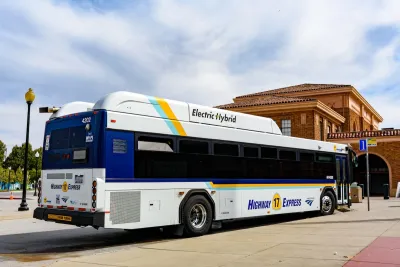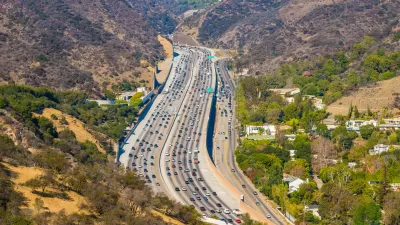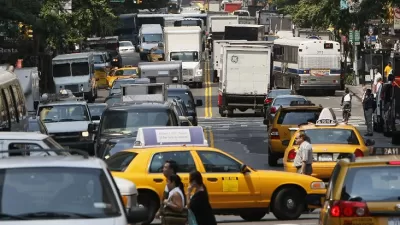How cities are leveraging data and technology to improve their transportation networks and reduce traffic.

New York City's groundbreaking congestion pricing experiment has sent ripples through the urban planning and transportation sectors, offering valuable insights for transit agency leaders across the nation. The program's immediate impacts have not only successfully reduced traffic congestion but also significantly boosted ridership on mass transit options.
This innovative approach serves as a compelling case study for cities facing similar challenges, demonstrating how data-driven strategies can truly reshape urban mobility.
However, recent events have cast uncertainty over the future of congestion pricing in New York City, with federal deadlines and legal disputes creating a complex landscape. Here we discuss various issues and solutions beyond congestion pricing that further reinforce the many different ways other cities and communities have leveraged different philosophical approaches in the pursuit of traffic reduction and urban mobility.
The congestion pricing experiment
The core philosophy behind congestion pricing is not simply to tax commuters but to leverage data and incentives to encourage a shift toward more sustainable and efficient transportation methods. By implementing a toll system for vehicles entering Manhattan's busiest areas, New York City has effectively created a financial incentive for commuters to reconsider their travel habits.
The results speak for themselves: just one month after the program's launch on January 5, 2025, the Metropolitan Transportation Authority (MTA) reported that one million fewer vehicles had entered the designated "congestion relief zone" compared to pre-implementation projections.
This reduction in vehicle traffic has led to remarkable improvements in travel times. Drivers crossing the Holland Tunnel, for instance, have experienced a staggering 48 percent reduction in travel time during peak morning hours. Similarly, the Williamsburg and Queensboro Bridges have seen average trip times decrease by 30 percent. These time savings extend beyond private vehicles, with buses entering Manhattan from various boroughs saving up to 10 minutes on their routes, enhancing service reliability.
Perhaps most significantly, the congestion pricing initiative has catalyzed a notable shift toward public transportation. Weekday bus ridership has grown by 6 percent, while weekend ridership has surged by an impressive 21 percent compared to January 2024. Subway ridership has also seen substantial increases, with weekday usage up by 7.3 percent and weekend ridership climbing by 12 percent. These figures underscore the program's success in nudging commuters towards more sustainable travel options.
Where other communities are taking a different approach
The New York experiment offers valuable lessons for other cities seeking to address traffic congestion and improve their mass transit systems. Progressive cities on the West Coast, such as San Jose and Portland, have already been implementing innovative approaches to enhance their public transportation networks.
San Jose, for example, is investing in cloud-based transit signal priority at 174 intersections along its Frequent Network, which promises to reduce delays for numerous bus routes. This technology-driven solution demonstrates how data can be harnessed to improve the efficiency and attractiveness of public transit.
On the East Coast, Boston is making strides with a $21.6 million Congestion Relief Grant from the Federal Highway Administration. This funding will support the expansion of the Bluebikes bike-sharing program, the introduction of new transit shuttles, and the development of a mobile app for seamless trip planning and payment across various modes of transportation.
These initiatives reflect a holistic approach to urban mobility, recognizing that a diverse range of transportation options is crucial for reducing reliance on private vehicles.
Making mass transit more competitive
The success of these programs hinges on making mass transit more competitive with private car use. Cities that invest in advanced traffic intersection prioritization technologies and leverage data to enhance the transit experience are seeing tangible benefits.
Data integration plays an important role in revolutionizing urban transportation systems. By collecting and analyzing data from various sources such as sensors, GPS systems, ticketing systems, and social media feeds, city governments can gain a comprehensive understanding of their transportation networks' performance.
This real-time monitoring enables authorities to identify bottlenecks, delays, or overcrowding promptly, allowing for immediate actions to optimize routes, adjust schedules, or allocate additional resources.
The approach to incentivizing public transit use varies among cities, with some opting for the “carrot” approach and others employing the “stick.” New York's congestion pricing scheme falls into the latter category, using financial disincentives to discourage private vehicle use in congested areas. However, many cities are also exploring positive incentives to encourage public transit adoption. These can include free or discounted transit passes, reimbursements, partial payments, or pre-tax payroll deductions for commuters.
Research suggests that combining incentives such as discounted passes with improved transit service and higher private vehicle fees can be particularly effective in increasing public transit use and reducing automobile dependence.
For example, offering free-fare cards has proven successful in boosting transit use among low-income individuals and college students. However, it's important to note that the effectiveness of these incentives can be undermined if free or subsidized parking is also available, highlighting the need for a comprehensive approach to transportation policy.
The common thread among successful urban transportation initiatives is the use of data to make mass transit more competitive. When cities invest in improving the transit experience through technology, service enhancements, and targeted incentives, the results are clear: increased ridership, reduced congestion, and lower emissions. These outcomes benefit not just individual commuters but the broader community as well, contributing to improved air quality, reduced traffic-related stress, and more livable urban environments.
In looking ahead, the lessons from New York's congestion pricing experiment and the initiatives of other progressive cities offer a roadmap for transit agency leaders worldwide. By embracing data-driven strategies, investing in advanced technologies, and creating the right mix of incentives and disincentives, cities can transform their transportation systems to meet the challenges of the 21st century.
The key takeaway for transit agency leaders is clear: when mass transit is made more attractive, efficient, and competitive with private vehicle use, commuters will respond positively. The data from New York and other cities proves that well-designed transportation policies can yield significant benefits for urban communities. As more cities adopt these innovative approaches, we can look forward to a future of smarter, more sustainable urban mobility that enhances the quality of life for all residents.
Timothy Menard is the Founder and CEO of LYT, provider of cloud-based open-architecture smart traffic solutions. LYT makes traffic lights smart by enabling them to see and respond to traffic, allowing them to prioritize first responders and public transit and streamline traffic flow to reduce congestion and emissions.

Florida Considers Legalizing ADUs
Current state law allows — but doesn’t require — cities to permit accessory dwelling units in single-family residential neighborhoods.

Manufactured Crisis: Losing the Nation’s Largest Source of Unsubsidized Affordable Housing
Manufactured housing communities have long been an affordable housing option for millions of people living in the U.S., but that affordability is disappearing rapidly. How did we get here?

Research Shows More Roads = More Driving
A national study shows, once again, that increasing road supply induces additional vehicle travel, particularly over the long run.

EV Chargers Now Outnumber Gas Pumps by Nearly 50% in California
Fast chargers still lag behind amidst rapid growth.

Affordable Housing Renovations Halt Mid-Air Amidst DOGE Clawbacks
HUD may rescind over a billion dollars earmarked for green building upgrades.

Has Anyone at USDOT Read Donald Shoup?
USDOT employees, who are required to go back to the office, will receive free parking at the agency’s D.C. offices — flying in the face of a growing research body that calls for pricing parking at its real value.
Urban Design for Planners 1: Software Tools
This six-course series explores essential urban design concepts using open source software and equips planners with the tools they need to participate fully in the urban design process.
Planning for Universal Design
Learn the tools for implementing Universal Design in planning regulations.
City of Moreno Valley
Institute for Housing and Urban Development Studies (IHS)
City of Grandview
Harvard GSD Executive Education
City of Piedmont, CA
NYU Wagner Graduate School of Public Service
City of Cambridge, Maryland





























